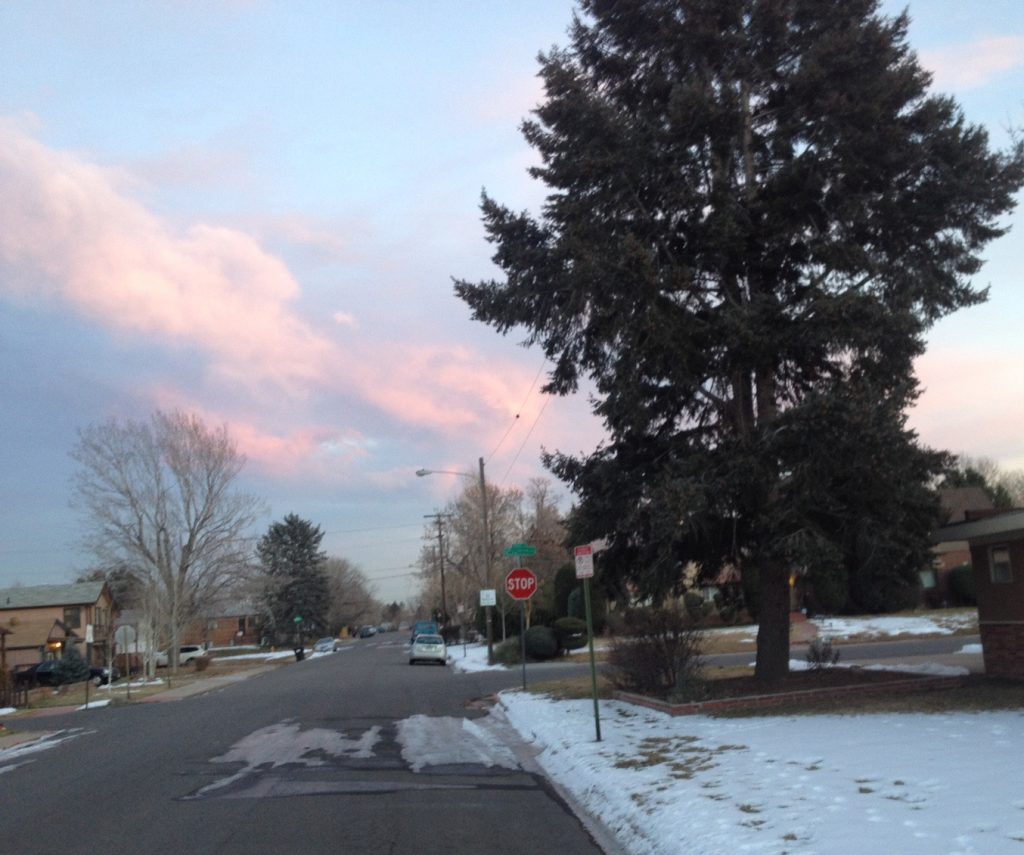When it comes to trees in designed landscapes in Colorado, landscape architects and designers don’t have very many species to choose from. With that being said, it might seem heretical to propose that the list of trees to pick from be restricted even further. Specifically, I advocate that large evergreen trees NOT be planted in dense urban areas that experience cold winters, unless they are sufficiently distant from walks and streets located north of such evergreens.
The shadows that large evergreen trees cast can help foster ice patches on walks and roads, compromising the safety and welfare of those who utilize these areas to travel about our towns and cities. If we are going to encourage biking and walking to ease automobile congestion and alleviate environmental impacts, having the safest travel routes we can achieve is a noble goal.
It may be surprising to those who don’t work in the landscape, architecture or planning fields, but many municipalities require that a certain number or percentage of the trees on a landscape plan be evergreen trees. Sometimes these arbitrary requirements restrict designers and architects to squeeze these large winter-shading ice patch-makers into a site where it might be best to avoid them. However, I should mention that some municipalities that I’ve worked with do acknowledge the problem of winter shading from evergreen trees, and they do have instructions in their landscape codes to locate proposed large evergreens away from walks and roads that would be shaded by those evergreens.
I first became aware of the problem of evergreen shadow ice patches as an urban bike commuter in the Denver area. It is frustrating at best, and rather dangerous at worst to encounter a patch of ice on a street during winter time. I have found that often times when biking in the Denver area in winter, the majority of streets can be clear of ice, except for those areas shaded by evergreens that are located just south of walks and streets. But it is not just bikers that would benefit from restricting evergreen trees in urban areas. Walkers and runners would also have an improved level of travel safety due to less icing of their pathways.

An ice patch on a Denver street, from the shadow of a large evergreen tree.
Because the foliage canopy of pine, spruce and fir trees does not drop during winter, melting of snow and ice via solar gain is limited. Deciduous trees, which drop their leaves and allow more sunlight to reach walks and streets, are a better choice in place of evergreens. I acknowledge that evergreen trees are often used for landscape screening. But I question whether this screening is worth it when considering their impact to roads and walks during winter.
Another impact from lost solar gain due to evergreen tree shading is on homes and other buildings. A building that sits in the winter shadow of a large evergreen tree will miss out on solar warmth during a sunny Colorado winter day.
I do realize that in dense urban areas, it’s not just trees that can shade our streets and sidewalks. People need shelter and workspaces, and some of those structures could end up shading streets and cause ice patches. But residents don’t need evergreen trees on their urban lot. I advocate for trees to create shade in summer, visual interest in all seasons, and wildlife habitat. But the choice of tree in tight urban quarters needs to be considered carefully.
Despite the tongue in cheek title of this blog post, evergreen trees can be a wonderful addition to the landscape. I am not actually asking for evergreen trees to be banned from urban areas of Colorado. However it does seem best that in dense urban areas that experience cold winter weather, we should consider restricting evergreen trees to parks and large lots, away from streets and sidewalks where their winter shade will not cause icy travel dangers for walkers, bikers and even cars.
This is the official blog of Outdoor Design Group, Colorado Landscape Architects. For more information about our business and our services, click here.